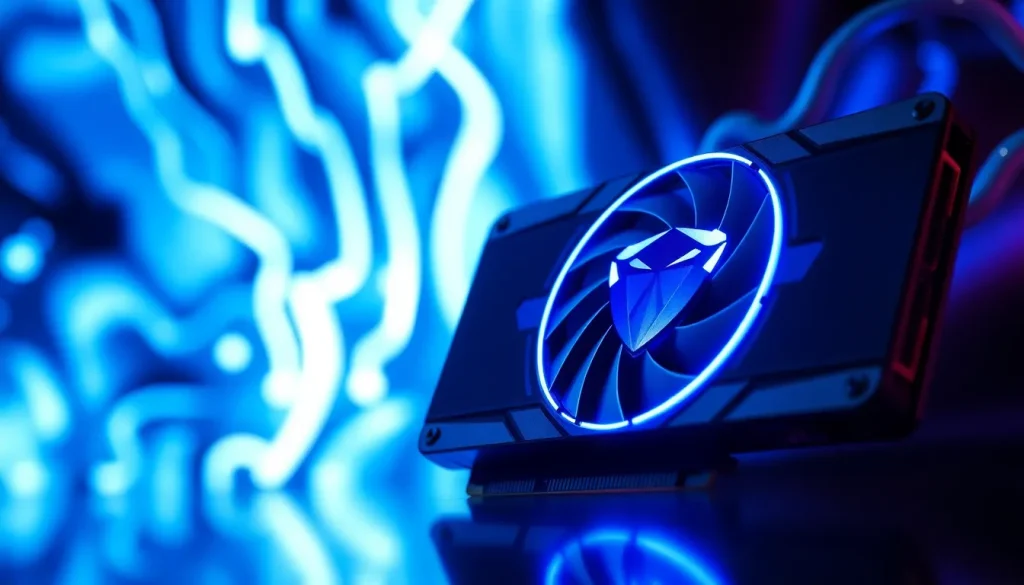Panther Lake GPU leaks again with details on frequency and memory

Intel's upcoming Panther Lake architecture is generating considerable buzz in the tech community, and recent leaks are shedding light on some groundbreaking features of its integrated GPU, the Xe3. With advancements in both hardware and architecture, Panther Lake promises to push the boundaries of performance and efficiency in integrated graphics, making it an exciting prospect for gamers and professionals alike.
Stay tuned as we delve deeper into what these revelations mean for the future of Intel GPUs, exploring their technical specifications, architectural innovations, and potential impact on various applications.
- Intel's Xe3: A Closer Look at the Upcoming GPU
- Architectural Improvements and Performance Metrics
- Memory Configuration: A Key to Enhanced Performance
- Enhanced Execution Units: A Boost in Graphics Power
- Architectural Features: Efficiency Meets Performance
- Virtualization Capabilities: A Step Towards Versatility
- Real-World Performance Expectations for Gaming
Intel's Xe3: A Closer Look at the Upcoming GPU
The latest engineering samples of Intel's Panther Lake are hinting at significant enhancements in the integrated graphics department. One of the standout features is the GPU's ability to reach a boost frequency of 2,000 MHz, paired with LPDDR5 memory operating at 7,467 MHz. This configuration supports up to 10 active Xe-Cores, translating to 80 Execution Units (EUs). The stepping B0 designation indicates that we are looking at a mature silicon design, rather than a prototype, suggesting that performance metrics are more reliable.
What's particularly interesting about this leap from Xe2 to Xe3 is that it hinges on three main pillars: similar clock speeds, enhanced memory bandwidth, and an increase in available execution units. Although a portable iGPU reaching 2,000 MHz isn't groundbreaking—considering the Core Ultra 9 288V can hit 2,050 MHz—it is noteworthy given its exclusivity. So, does this mean Panther Lake is shaping up to be a viable option for gaming?
Architectural Improvements and Performance Metrics
The architectural advancements of Xe3 signal a significant step forward for Intel. Reports suggest an increase in Instructions Per Cycle (IPC), which is a crucial metric for performance. Enhanced IPC translates to better efficiency and speed, which is essential for gaming and demanding applications.
The leaked details regarding the ID b083 and stepping B0 imply that this version is close to final, showcasing a boost frequency that is genuinely impressive for Intel, indicating no regression in performance capabilities.
Memory Configuration: A Key to Enhanced Performance
The memory configuration is another critical area where Panther Lake shines. By utilizing LPDDR5 memory with an effective speed of 7,467 MHz and carefully tuned timings (tRP=136, tRCD=136, tRAS=320, tRC=456), the architecture maximizes bandwidth efficiency. This optimization is vital since the GPU relies on system memory rather than having dedicated VRAM.
- Improved memory access speed: Faster RAM allows the GPU to retrieve data swiftly, crucial for real-time rendering.
- Lower latency: Optimized timings decrease the delay between memory requests and data retrieval.
- Increased bandwidth: High memory speed contributes to overall performance, especially in gaming scenarios.
Intel's commitment to not skimping on this aspect is a promising sign for users who demand high performance from their integrated graphics.
Enhanced Execution Units: A Boost in Graphics Power
When it comes to the number of graphics cores, the leaked information reveals that Panther Lake features 10 active Xe-Cores, equivalent to 80 EUs. However, the full Xe3 configuration is expected to support up to 12 Xe-Cores, offering a total of 96 EUs. This design choice aligns with Intel's previous strategies, where they tailored chips to fit specific market segments, as seen in their Lunar Lake products.
This increase in cores represents a significant leap from the current Xe2 architecture, providing approximately 50% more cores. The implications for gaming and graphics-intensive tasks are substantial, as more cores equate to better parallel processing capabilities.
Architectural Features: Efficiency Meets Performance
Each Xe-Core comprises 8 EUs, organized into Dual Sub-Slices (DSS), mirroring the structure from the Xe2 generation. This familiar architecture continues to support SIMD16 mode, allowing each EU to process 16 threads simultaneously, which is crucial for multitasking and high-performance applications.
Additionally, the L3 cache configuration is set to include four banks, which should enhance data throughput and maintain high operational frequencies without bottlenecks. This architecture is particularly beneficial for graphics rendering, where quick access to data can significantly affect performance.
Virtualization Capabilities: A Step Towards Versatility
Another notable feature of the Xe3 architecture is its support for SR-IOV (Single Root I/O Virtualization), which allows for the virtualization of GPU resources. This capability is a significant advantage for enterprises and data centers, enabling multiple virtual machines to share the same GPU resources effectively.
- Improved resource allocation: Virtualization allows for more efficient use of hardware resources.
- Flexibility: Supports diverse workloads across different systems or applications.
- Enhanced performance: Provides a smoother experience for users running virtualized environments.
This focus on versatility indicates that Intel is not solely targeting the gaming market but also aims to cater to professional environments where computational efficiency is paramount.
Real-World Performance Expectations for Gaming
With all these features combined, the Panther Lake GPU is poised to deliver robust gaming performance, potentially allowing for 1080p gaming at low settings with steady frame rates. The architecture's focus on efficiency means that it can achieve this with minimal power consumption and an effective cooling solution, making it suitable for laptops and compact systems.
As Intel continues to refine its software and drivers, the launch of Panther Lake could mark a significant turning point in integrated graphics performance. If Intel can maintain its momentum and deliver on its promises, the Panther Lake architecture may redefine user expectations for integrated GPUs.




Leave a Reply